Trees Birds Mammals Fish Amphibians Reptiles
Wild Algarve
Bookshop
Ganoderma resinaceum Boud.
Phylum: Basidiomycota - Class: Agaricomycetes - Order: Polyporales - Family: Ganodermataceae
Distribution - Taxonomic History - Etymology - Identification - Culinary Notes - Reference Sources
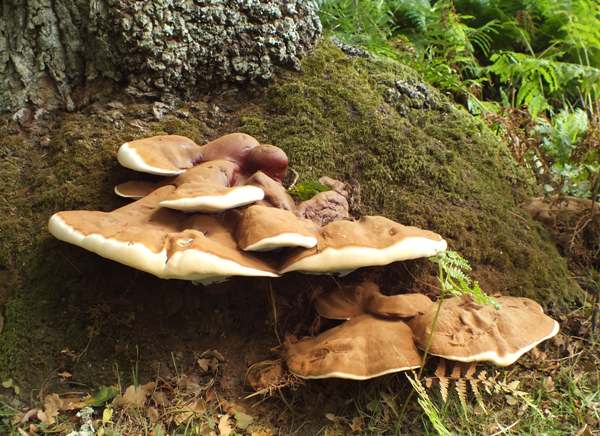
Ganoderma resinaceum is a rare poroid fungus that
persists throughout the year. The yellow resin from the edges of this
large bracket hardens rapidly. As the fruiting body ages, this beautiful fungus turns
black and can then be mistaken for the Hoof Fungus, Fomes fomentarius.
When this tough bracket is broken or cut, a thick yellow resin oozes from the fungus and
rapidly sets to form a hard shiny surface; the specific name reflects this characteristic.
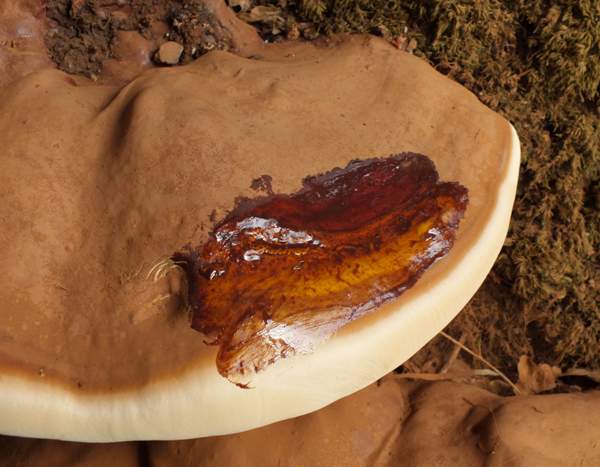
The huge bracket pictured above is attached to the basal roots of an old oak tree in the New Forest, Hampshire, England. At first glance it looks much more like a Giant Polypore Meripilus giganteus than a Ganoderma, and I almost passed it by on the basis that impressive Giant Polypores are so common that they hardly create an impression any more!
What gives this imposter away, however, is the fact that the grass and other vegetation all around the bracket fungus is tinted brown by spores, and Meripilus spores are white. not brown. (The upper surfaces of Ganoderma resinaceum are also much tougher than those of the relatively short-lived Giant Polypore.)
Distribution
A rare find in Britain and Ireland, Ganoderma resinaceum is more common in some northern and central parts of mainland Europe.
This impressive fungus has a very wide distribution: it has been reported from northern Africa, Asia, Australia and both South and North America.
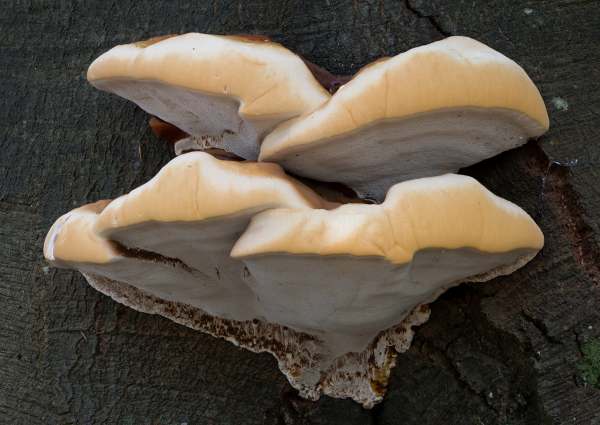
Taxonomic history
The bracket fungus was described in 1889 by the French mycologist Jean Louis Emile Boudier (1828 - 1920), who gave it what remains its currently-accepted scientific name, Ganoderma resinaceum.
Synonyms of Ganoderma resinaceum include Fomes resinaceus (Boud.) Sacc.
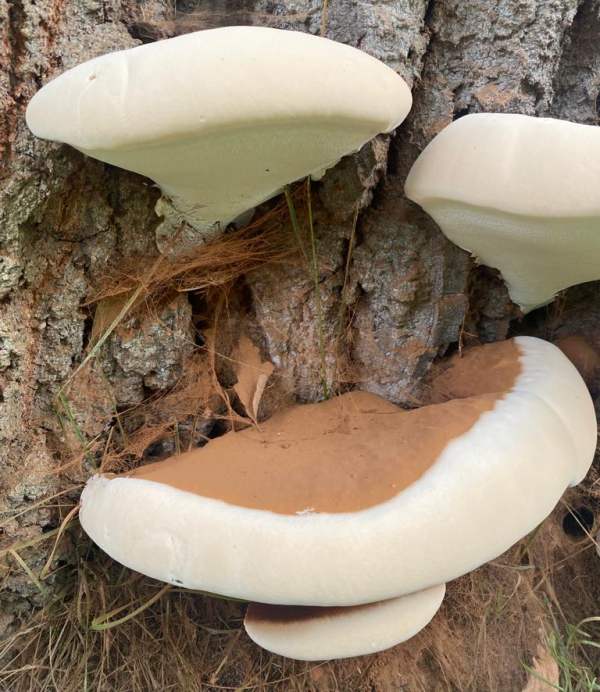
Above: Ganoderma resinaceum at Queen Victoria's beloved home (Osborne House) on the Isle of Wight
Etymology
Ganoderma comes from the Greek words Ganos and derma and translates to 'shining skin'. Compared with many other members of this genus, Ganoderma resinaceum is quite bright and shiny... provided you wash off any spore dust from the upper surface of the cap. The specific epithet resinaceum means 'resinous' and is a reference to the hard-setting sticky liquid that emanates from fruitbodies that are damaged.
Identification guide
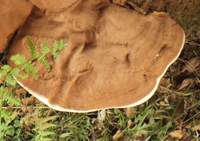 |
Cap
A startling sight when young a not covered in its reddish-brown spore dust, this fungus sometimes forms tiers of brackets which occasionally merge. Individual brackets are 15 to 35cm across and 4 to 8cm thick when fully grown. The cap of the fruiting body has a light
yellowish margin and a beautiful orange-tinged rufous brown top. |
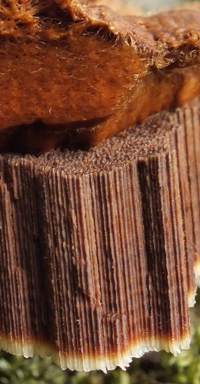 |
Tubes
The brown tubes are 8 to 20mm deep, and they terminate in roundish pores. |
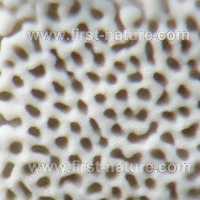 |
Pores
Spaced at 3 to 4 per mm, the pores are initially whitish or more often very pale yellow when the fruiting body is young,
turning light brown with age or when bruised. |
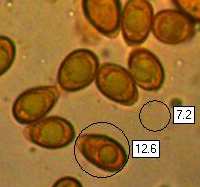 |
Spores
Ellipsoidal to ovoid, truncate at one end, smooth; 9-11 x 5-7µm.
Spore print
Reddish-brown. |
Odour/taste |
Spicy odour and a bitter taste. |
Habitat & Ecological role |
Parasitic on living broadleaf tree trunks, particularly oaks and Beech. |
Season |
Visible throughout the year but releasing spores in summer
and autumn. |
Similar species |
Ganoderma lucidum usually has a lateral stem it has smaller spores and larger pores.
Ganoderma applanatum, the Artist's Fungus, is ochre brown
with a much thinner white margin than Ganoderma resinaceum. |
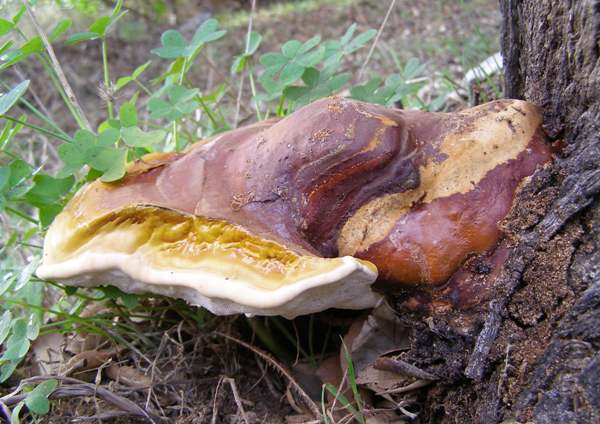
Culinary Notes
These bracket fungi are far too tough to be edible, and in any case they are rare in Britain and Ireland and therefore should not be collected for any reason other than serious scientific research.
The huge bracket shown above was growing on an oak tree in the Algarve region of southern Portugal. The specimen seen below was growing at the base of a dead Silver Maple tree in Burleson, TX USA.
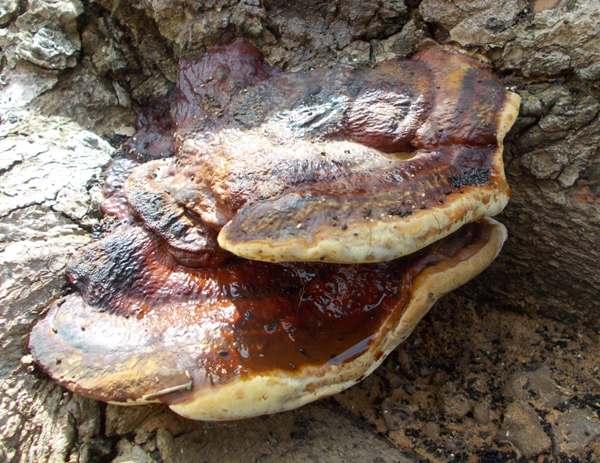
Reference Sources
Mattheck, C., and Weber, K. Manual of Wood Decays in Trees. Arboricultural Association 2003.
Pat O'Reilly, Fascinated by Fungi, 2016.
Dictionary of the Fungi; Paul M. Kirk, Paul F. Cannon, David W. Minter and J. A. Stalpers; CABI, 2008
Taxonomic history and synonym information on these pages is drawn from many sources but in particular from the British Mycological Society's GB Checklist of Fungi.
Acknowledgements
This page includes pictures kindly contributed by Deby Feeley, David Kelly and Bee Parry.
Top of page...
Fascinated by Fungi. Back by popular demand, Pat O'Reilly's best-selling 450-page hardback book is available now. The latest second edition was republished with a sparkling new cover design in September 2022 by Coch-y-Bonddu Books. Full details and copies are available from the publisher's online bookshop...